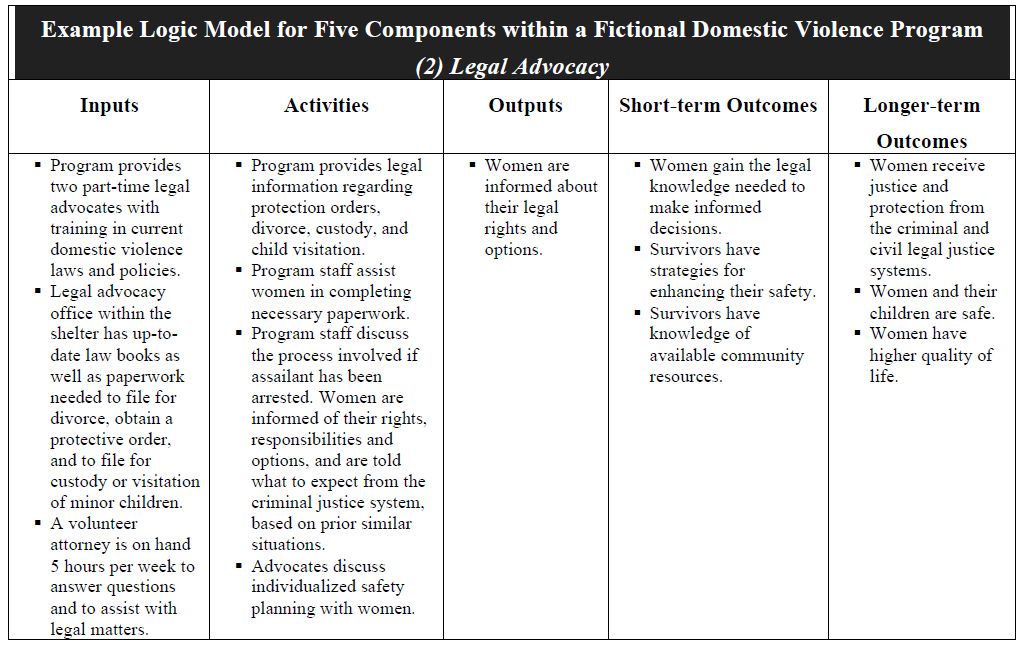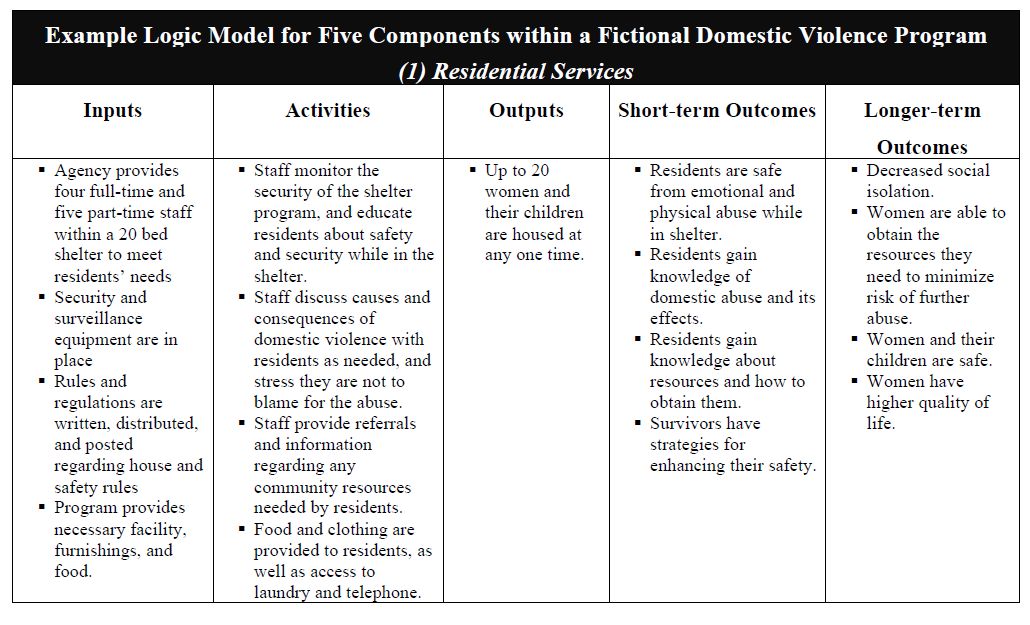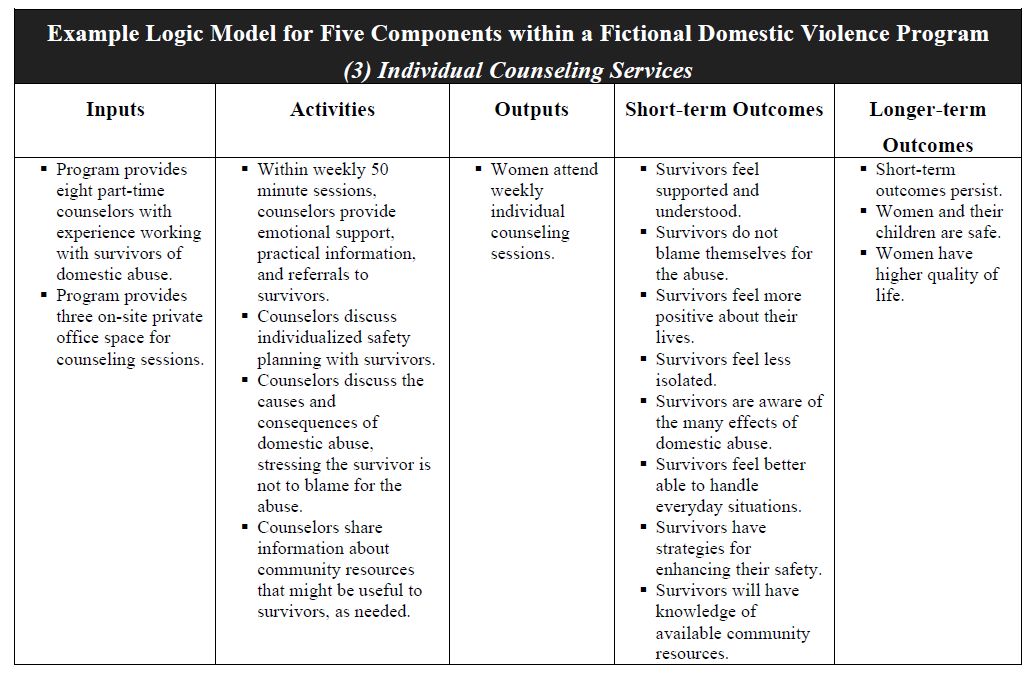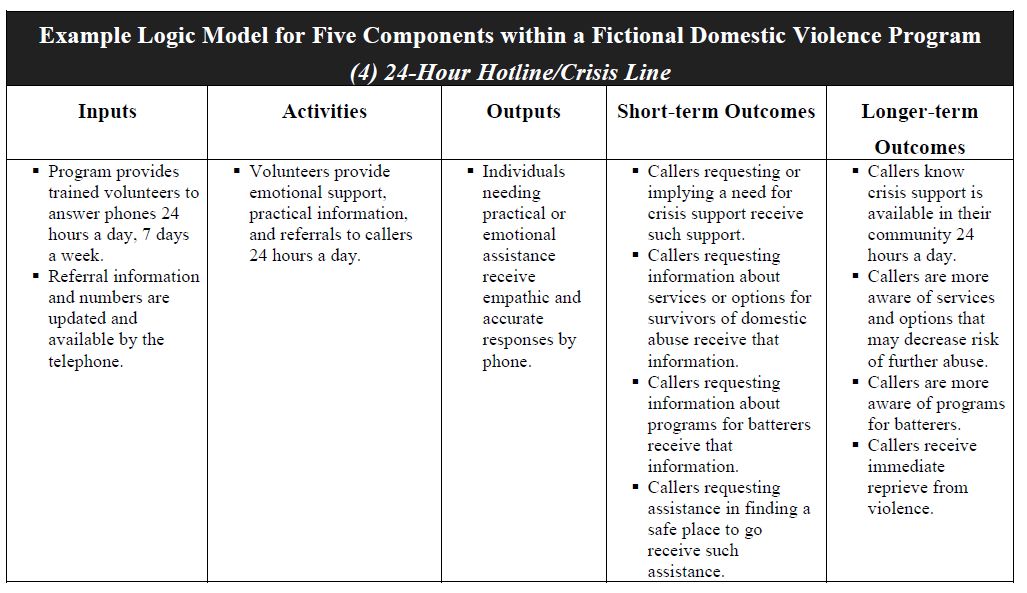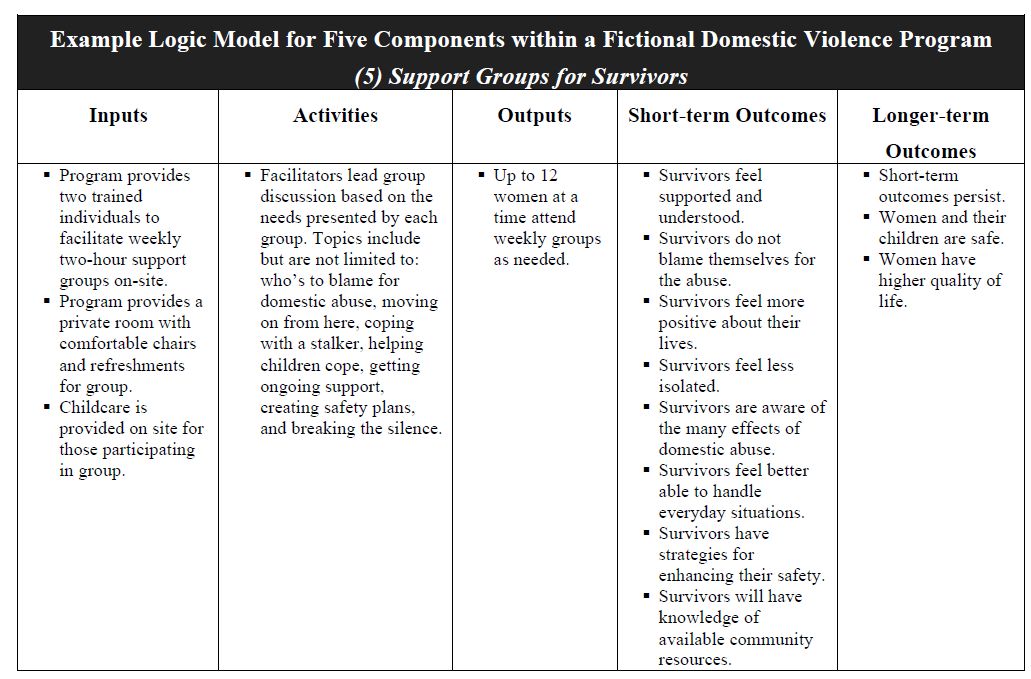Outputs should be captured in the monitoring and evaluation framework. Outputs generally include the numbers of support or service interactions that women and children will receive while they are in a shelter or are participating in a particular programme.
Documenting outputs consists of counting the number and types of services each programme participant receives; the length of time each participant remains in the programme (e.g. number of days in the shelter); and the frequency with which the participant uses particular services (e.g. number of group sessions attended).
Illustrative output indicators include:
- the number of women and children admitted to shelters (often on a monthly basis)
- the number of women and children who could not be admitted/were turned away, including the reasons for turnaways
- occupancy rates in shelters (usually the percentage of beds or bedrooms occupied on a particular night or over a period of a month)
- the number of women informed about their legal rights and options
- the number of women attending counseling sessions
- the number of women attending support groups
- the number of women completing a safety plan
- the number of women accessing child care and support
Outcomes or the change that is expected as a result of the shelter stay or participation in the programme should also be captured in the framework. The outcome statements must be developed carefully so that they clearly identify the type of change that will be measured and ensure that proposed outcomes are achievable. Outcomes should make sense in the context of the needs of women served by the programme, and although these can be challenging to measure in a short-stay shelter, there are a number of standard outcomes most shelters seek to accomplish.
Illustrative indicators to track outcomes include:
- Proportion of women and children accessing shelter services that are safer
- Women have increased awareness of the impact violence has on them and their children and knowledge of available services (i.e. awareness of community resources/supports)
- Women are satisfied with the services they received while in shelter
- Women are better able to access community resources in order to receive support for themselves and for their children
- Women feel less isolated
For shelters with longer-term programmes (six months or longer) or outreach services, additional outcomes may include:
- Women and children remain safe over a long period of time
- Women and children are connected with resources and supports they need to achieve their goals
- Women have access to a reliable source of income.
- Upon programme completion, women have stable, affordable and safe housing
- Women achieve the goals they have set for themselves
While there are many benefits to measuring long-term outcomes, it can be costly and labour-intensive to follow women over the length of time required to obtain the necessary information. The resources and capacity of the programme should be carefully considered when planning to measure long-term outcomes.
For each intended outcome (or possibly for outputs), a monitoring framework should include indicators or statements that help define the desired change and describe how that change will be measured.
The following is a hypothetical logical framework example constructed by the National Center on Domestic and Sexual Violence (USA)
